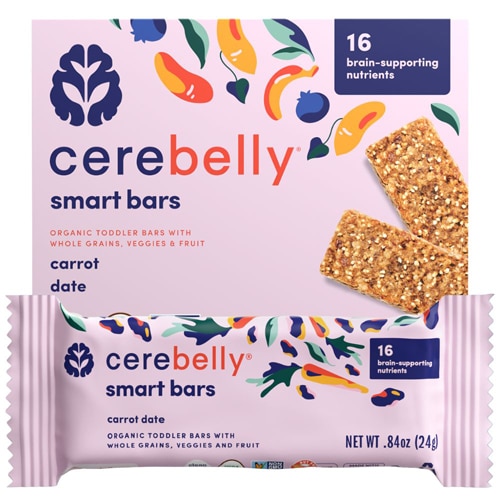[vc_row][vc_column][vc_column_text]Even as an adult, packing lunches can be stressful – not to mention time-consuming, especially if you have multiple to assemble. Many parents have great intentions to pack their child a delicious and
healthy lunch at the start of the year, but that drive can dwindle with the morning madness of getting everyone out the door. Fortunately, as kids get older, as sad as it may be, their ability to help with things increases – starting with lunch!
Getting your child involved with planning and preparing their daily lunches can enhance their nutrition knowledge, instills responsibility and removes one thing from your to-do list. These simple tips will help get your kiddo started packing a healthy school lunch this year.

Packing Lunches Guide for Parents & Kids
Packing lunches together is the perfect opportunity to teach your kids about nutrition. Lunch is not only a time to rest the mind, but to fuel your student’s body with vitamins and minerals, such as lean protein, dietary fiber and healthy fats. Incorporating lean protein in your student’s lunch is sure to keep them full and satisfied throughout the afternoon.
In addition to protein, whole grains, fruit, vegetables and low-fat dairy should also be included. Choose
whole grains as they deliver a variety of important nutrients and dietary fiber.
Fiber will help your student feel full and aid digestion. Incorporating low-fat dairy ensures your student is consuming important nutrients like calcium.
Lunch Packing Ideas: The ”Rule of Three” is Key
Knowing what to pack is important, so guidance must be provided. Building a balanced meal is a great way to ensure your student receives the key nutrients their bodies need. By simply following the “rule of threes” and pairing together at least three of the five food groups can make a perfectly balanced meal. As your student gets older, it’s also important to ensure they have enough to eat in their lunch to have enough energy to get them through the rest of the day.
For younger students, a balanced meal looks like:
- 1 whole grain sandwich thin with peanut butter and jelly, ½ cup cucumber slices or ½ cup grapes, and 1 serving small cubes of cheese
- Turkey and cheese roll up, 1 serving whole grain crackers, ½ cup carrots with 1 Tbsp. ranch dip, and mini granola bar
- 1 cup pasta salad made with tomatoes, bell peppers, cucumbers and beans, yogurt, ½ cup raspberries and ¼ cup trail mix
For high schoolers, a balanced meal looks like:
- 1 whole grain wrap with 2-3 slices turkey breast, small handful of spinach leaves, 1 slice cheese, and 1 Tbsp. mayo, ¼ cup almonds, medium apple and 1 serving pretzels
- 1 whole grain pita with 3 oz. leftover chicken, 2 Tbsp. hummus, shredded carrots, cucumber slices, and red onion, ½ cup strawberries and 1 cheese stick
- 5 cups brown rice with 1 cup leftover stir-fry veggies and chicken, medium orange and granola bar
More tips for guiding kids to pack healthy lunches
Take out the guess work.
Your student is already trying to focus on their studies. Make packing lunch simple by having your child create a list of options that fit the “rule of three” – or, they can list six to eight foods in each food group that they like. When it’s time to pack lunch, all they have to do is grab an item from each food group and toss it in their lunchbox. Tape the list to your fridge or pantry wall for an easy cheat sheet. Be sure to go through the list every couple of weeks to remove and add new items to ensure variety and prevent boredom.
Designate space for lunch items and packing materials.
Not only with this help keep your fridge organized, but it will keep your student from asking you where a certain food is. Don’t stop with the fridge! Have a space for lunch items in your pantry, too. Stock up on single-serve items such as yogurt, fruit and
applesauce cups, crackers, pretzels, cheese sticks, granola bars, nuts and
popcorn for easy grab-n-go options. Ensure there are enough options and variety at the beginning of the week to last through to the end of the week. For a smooth packing process, keep all the
bags,
containers, silverware,
bento boxes and even the
lunchbox itself in one designated place.
Plan your packing and prep time.
Plan with your child the best time to pack their lunch. If they like to wake up and walk out the door, assembling lunch the night before might be the ideal time. Decided where they’ll keep their lunchbox, too, so they don’t forget it in the morning. (You might even hang a note by the door as a reminder.) If you have an early riser, packing in the morning works. To simplify the process, prep all fresh fruit and vegetables at the beginning of the week. Your student can get involved here, too. They can wash, slice or hand to you to chop, then let them portion things into
single-serve bags or containers for an easy grab-n-go lunch component.
These simple tips will not only help your student start the day feeling empowered because they prepared their own lunch, but you can feel good knowing your student is getting a nutritious and balanced meal. So, get ahead of the morning madness and get your student involved with packing their lunch this school year.[/vc_column_text][/vc_column][/vc_row][vc_row][vc_column][vc_text_separator title="Featured Products" border_width="2"][vc_row_inner equal_height="yes" content_placement="middle" gap="35"][vc_column_inner width="1/3"][vc_single_image image="162072" img_size="full" alignment="center" onclick="custom_link" img_link_target="_blank" css=".vc_custom_1661808996020{padding-right: 7% !important;padding-left: 7% !important;}" link="https://www.vitacost.com/kinderlyte-kindersprout-organic-plant-protein-kids-nutrition-shake-chocolate"][/vc_column_inner][vc_column_inner width="1/3"][vc_single_image image="162071" img_size="full" alignment="center" onclick="custom_link" img_link_target="_blank" css=".vc_custom_1661809015904{padding-right: 7% !important;padding-left: 7% !important;}" link="https://www.vitacost.com/kind-kids-chewy-granola-bars-peanut-butter-chocolate-chip"][/vc_column_inner][vc_column_inner width="1/3"][vc_single_image image="162069" img_size="full" alignment="center" onclick="custom_link" img_link_target="_blank" css=".vc_custom_1661809036935{padding-right: 7% !important;padding-left: 7% !important;}" link="https://www.vitacost.com/earths-best-organic-sea-salt-veggie-straws-snacks"][/vc_column_inner][/vc_row_inner][/vc_column][/vc_row]




